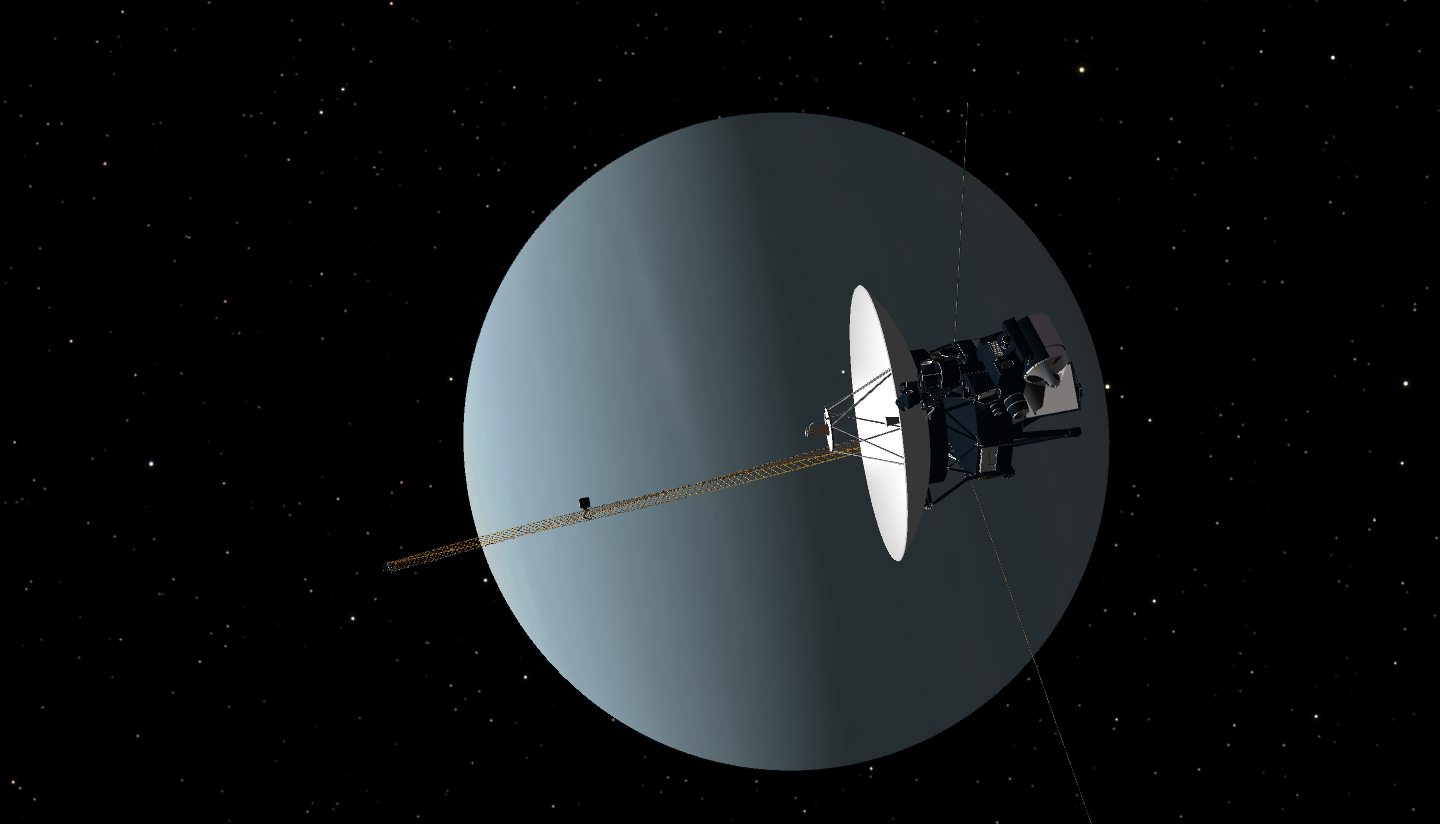
Buried inside data that NASA’s iconic Voyager 2 spacecraft gathered at Uranus more than 30 years ago is the signature of a massive bubble that may have stolen a blob of the planet’s gassy atmosphere.
That’s according to scientists who analyzed archived Voyager 2 observations of the magnetic field around Uranus. These measurements had been studied before, but only using a relatively coarse view. In the new research, scientists instead looked at those measurements every two seconds. That detail showed what had previously been missed: an abrupt zigzag in the magnetic field readings that lasted just one minute of the spacecraft’s 45-hour journey past Uranus.
The tiny wobble in the Voyager 2 data represents something much larger since the spacecraft was flying so fast. Specifically, the scientists behind the new research believe the zigzag marks a plasmoid, a type of structure that wasn’t understood particularly well at the time of the flyby in January 1986.
But by now, plasmoids have earned scientists’ respect. A plasmoid is a massive bubble of plasma, which is a soup of charged particles. Plasmoids can break off from the tip of the sleeve of magnetism surrounding a planet like a teardrop.
Scientists have studied these structures at Earth and nearby planets, but never at Uranus or its neighbour Neptune since Voyager 2 is the only spacecraft to date ever to visit those planets.
Scientists want to know about plasmoids because these structures can pull charged particles out of a planet’s atmosphere and fling them into space. And if you change a planet’s atmosphere, you change the planet itself. And Uranus’ situation is particularly complicated because the planet rotates on its side and its magnetic field is skewed from both that axis and the plane all the planets lie in.
Because Voyager 2 flew straight through this plasmoid, scientists could use the archived data to measure the structure, which they believe was about 250,000 miles (400,000 kilometres) across and could have stretched 127,000 miles (204,000 km) long, according to a NASA statement.
Ideally, scientists would piece together more observations of Uranus’ magnetic field, enough to better understand how this phenomenon has shaped the planet over time. But that will require another spacecraft to visit the strange sideways world.

The research is described in a paper published in the journal Geophysical Review Letters.
